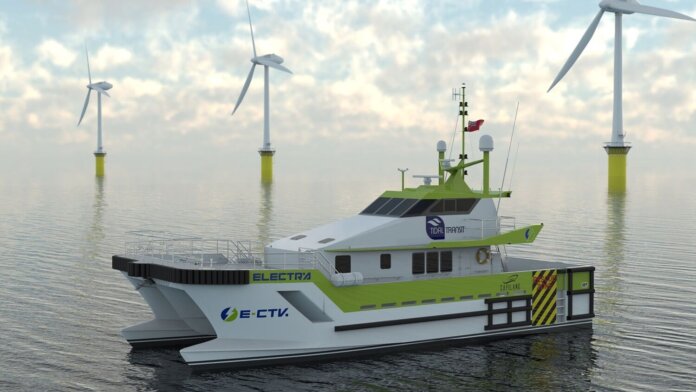A crew transfer vessel’s diesel engine is set to be retrofitted and replaced with a zero-emissions Volvo Penta solution to create what the company calls the world’s first retrofitted electric crew transfer vessel (E-CTV).
Retrofitting will be done on Ginny Louise, a 20 m Mercurio vessel. The company will supply its Inboard Performance System (IPS) for the project, along with an electric propulsion system, replacing the older combustion engines.
The old propulsion system will be replaced with a Quad Installation of Volvo Penta IPS 30 paired with fully electric motors and 2 MWh of on-board battery capacity.
“We are delighted to be involved with such a landmark project, which will feature our first ever Volvo Penta IPS powered 100% by batteries and with no on-board diesel generators,” says Volvo Penta U.K.’s Mehmet Belibagli.
“It’s an ultra-efficient set-up that will deliver longer-range and emissions-free transfers. There’s also closer control and maneuverability so journeys are safer, faster and more reliable. We believe this is the future for a number of segments within the marine industry and hope it will inspire further projects.”
The vessel is being developed for Tidal Transit. Cost of the retrofit is estimated at £8 million, with £6.3 million coming from the U.K.’s Zero Emissions Vessel and Infrastructure program.
As part of the project, new charging infrastructure will be installed, both through an onshore charging station and an offshore wind turbine-based charger. Once complete, the E-CTV is slated to support crew transfers at an offshore U.K. wind farm for three years.




